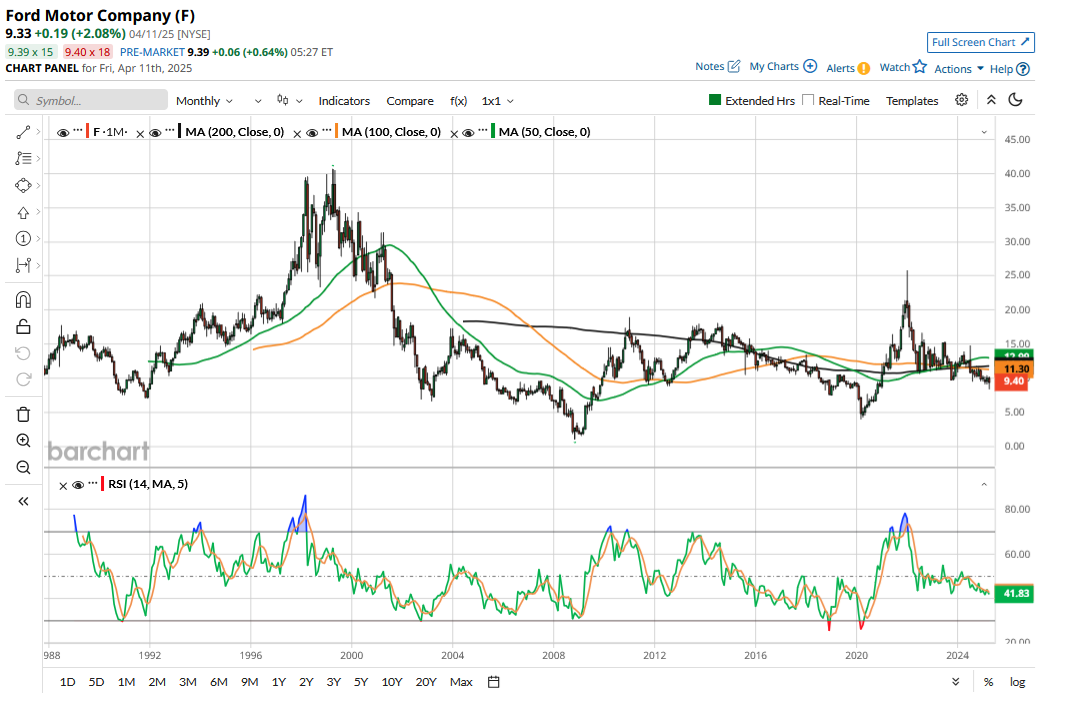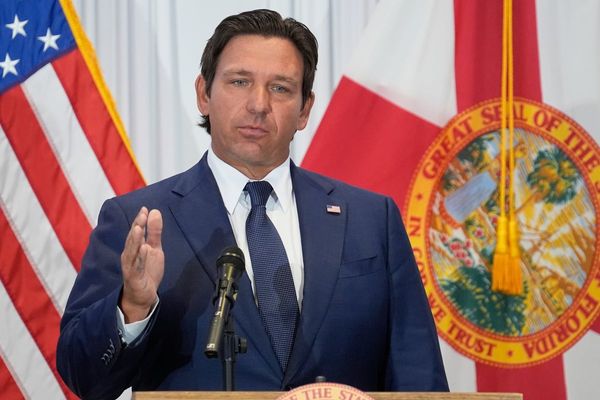/Ford%20Motor%20Co_%20logo%20by-%20Vera%20Tikhonova%20via%20iStock.jpg)
President Donald Trump has shown considerable flexibility on his “reciprocal tariffs” that he unveiled on April 2. First, the administration paused the tariffs, excluding those on China, for 90 days. The 10% flat tariff is still in place, which while significant, is not as disruptive compared to the full “reciprocal” rates.
Then, the president exempted electronic goods like computers, smartphones, and chips from the 125% reciprocal tariff on China. Trump clarified that the 20% fentanyl-related tariff would still apply to these goods.
Auto Tariffs Remain in Place
While Trump has softened his stance on tariffs that economists warned would push the U.S. economy into a recession, the 25% tariff on imports of finished vehicles remains in place and so far, there are no indications that Trump will roll back the 25% tariff on many auto parts which is set to come into effect on May 3. Steel and aluminum import tariffs are another burden for U.S. automakers as they will raise the costs for vehicles built and assembled in the country.
The U.S. automotive industry is incidentally quite integrated. Both Ford (F) and General Motors (GM) capitalized on the North American Free Trade Agreement (NAFTA) and its successor, the United States-Mexico-Canada Agreement (USMCA), to build an integrated supply chain across the northern and southern borders.

How Much Will Tariffs Cost the U.S. Auto Industry?
Speaking at the Wolfe Research Investment Conference in February, Ford CEO Jim Farley said that tariffs on Canada and Mexico will be “devastating” and “blow a hole in the U.S. industry that we’ve never seen.”
There are scary predictions of how much the tariffs will cost the U.S. automotive industry. Boston Consulting Group, for instance, expects tariffs to add between $110 billion to $160 billion in costs annually. Goldman Sachs estimates that over the next six to 12 months, new car prices in the U.S. will rise by between $2,000 to $4,000 to reflect the tariffs.
Separately, JPMorgan analyst Ryan Brinkman estimates that Trump’s tariffs will cost Ford $6 billion. Brinkman forecasts that the hit for GM would be even bigger at $14 billion, which is not surprising as GM is more exposed to the tariffs compared to Ford . GM also imports cars that are assembled in China and South Korea, which makes it quite vulnerable to the trade war.
Ford Stock Forecast
Ever since Trump started announcing his tariff onslaught, analysts have turned bearish on auto stocks.
Last week, Goldman Sachs and Bernstein downgraded Ford by one notch while lowering their target prices to $9 and $7, respectively. Bernstein, which rates Ford as a “sell-equivalent” now has the Street-low target price on the Detroit auto giant and its price estimate is almost 25% lower than F’s closing price on April 11.
The overall Street sentiment toward Ford is also quite tepid and only three of the 23 analysts actively covering the stock rate it as a “Strong Buy.” One analyst rates Ford as a “Moderate Sell” while five rate it as a “Strong Sell.” The remaining 14 analysts have a “Hold” or equivalent ratings and Ford’s mean target price of $9.63 is just 3.2% higher than last week’s closing prices.

Is the Worst Over for Ford?
Ford trades at a forward price-earnings (P/E) multiple of 6.84x while the P/E-to-growth (PEG) multiple is a mere 0.65x. Moreover, the stock even trades below its book value. Usually such depressed multiples would have meant that the stock is a screaming buy, but things should be seen in perspective now.
To begin with, there remains uncertainty over the tariffs, and things have been moving too fast and unpredictably on that front. Not only were Trump’s reciprocal tariffs much worse than expected, the walkback was even more sudden. If Trump goes soft on the auto tariffs – particularly on Canada and Mexico – Ford’s outlook would change dramatically (for the better). However, the U.S. economy has shown multiple signs of slowing down and consumer sentiment continues to plummet which means that Ford’s troubles go beyond auto tariffs.
Given the economic background, Ford does not look too attractive to me even as a tariff reprieve could bring some short-term respite.
While the stock is already too beaten down and trades at depressed valuations, recession fears coupled with a hawkish Federal Reserve make it tough to build a strong “Buy” case for Ford.







